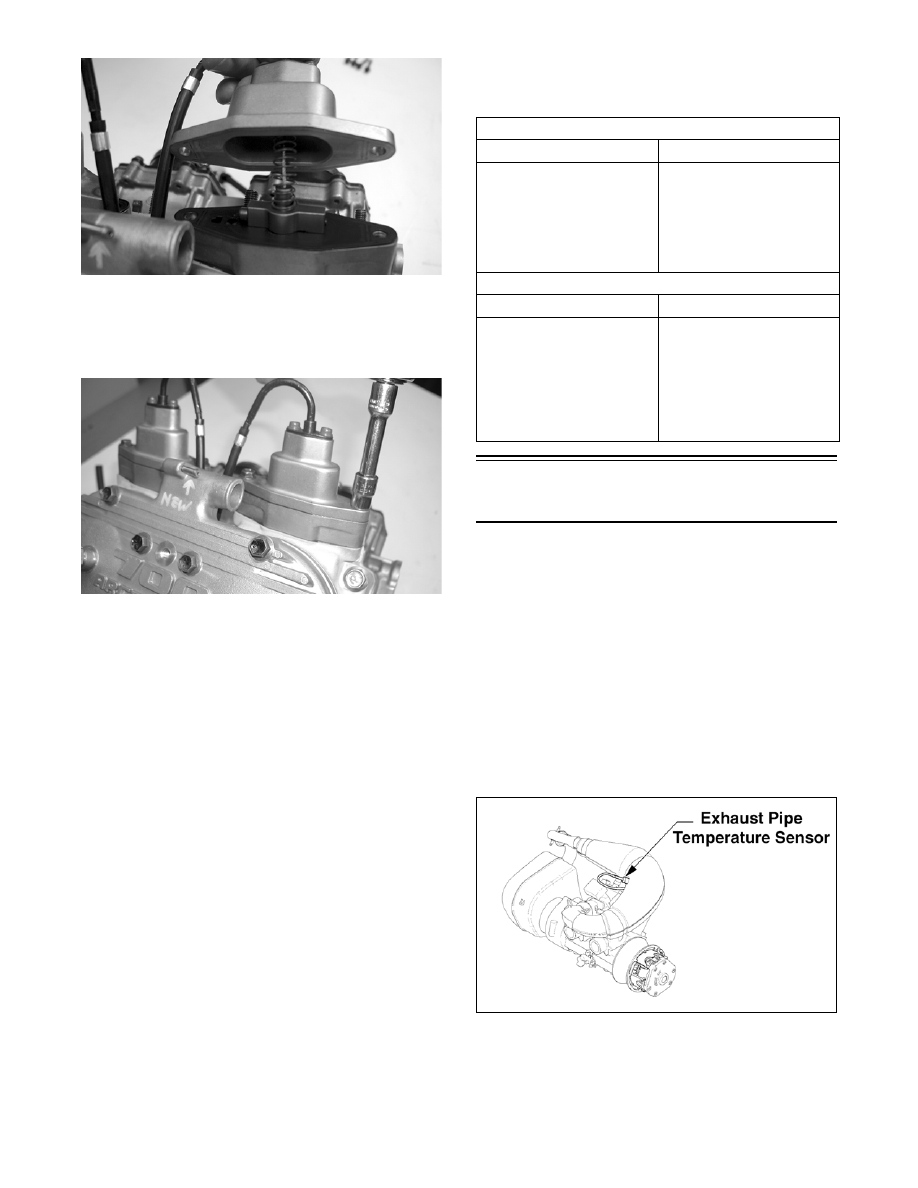Snowmobile Arctic Cat (2008 year). Instruction - part 71

3-28
FC024
5. Place the valve cover into position on the engine.
Secure with two cap screws (coated with blue Loc-
tite #243). Tighten to 10 ft-lb on the 600 cc or to
8.0 ft-lb on the 800/1000 cc.
FC023
6. Perform steps 6-9 in Cable Adjustment in this sub-
section.
TROUBLESHOOTING
The APV system has a self-testing mode built in.
Every time that the engine is started, the servo will
cycle once. The ECU monitors the voltages at the
servo during this cycle to assure they are within opera-
tional tolerances.
If all voltages are within tolerance, the system is ready
for operation. If the voltages are not within tolerance,
the servo will cycle two more times. If the voltages
remain out of tolerance, the system will not operate.
For example, if the headlight and taillight are disabled,
the ECU will sense a high voltage condition and acti-
vate the fail-safe mode. Adding more than 4 amps of
accessories will create a low voltage condition and
activate the fail-safe mode.
The fail-safe mode is an ECU operated engine RPM
limiter. When activated, the fail-safe mode will be
seen as an immediate loss of engine horsepower.
Exhaust Controlled
Timing (ECT) System
The APV models are equipped with the Exhaust Con-
trolled Timing (ECT) system which utilizes an exhaust
pipe temperature sensor. This system automatically
adjusts the ignition timing to provide maximum per-
formance through a variety of operating conditions.
The ECU receives input on engine RPM (demand) and
exhaust temperature (engine condition) and adjusts the
ignition timing accordingly. This system is not adjust-
able and is maintenance free.
If a system fault is suspected, use an ohmmeter to
check continuity of the exhaust pipe temperature sen-
sor located in the expansion chamber. A reading of
either 0 ohm or infinity indicates a failed sensor.
0737-314
NOTE: A disabled ECT system WILL NOT cause
engine damage; however, a failed ECT system will
have slower throttle response and may produce
slightly less top-end performance.
Problem: Engine loses power; no top end
Condition
Remedy
1. Exhaust valves stick-
ing in down position
1. Remove carbon depos-
its, burrs, etc.
2. Cables adjusted too
long
2. Inspect—adjust
3. CCU output voltage out
of tolerance
3. Inspect—replace CCU/
stator
Problem: Poor acceleration; hesitation
Condition
Remedy
1. Exhaust valve sticking
in up position
1. Remove carbon depos-
its, burrs, etc.—inspect/
replace return spring
2. Cables adjusted too
short
2. Inspect—adjust
3. CCU output voltage out
of tolerance
3. Inspect—replace CCU/
stator